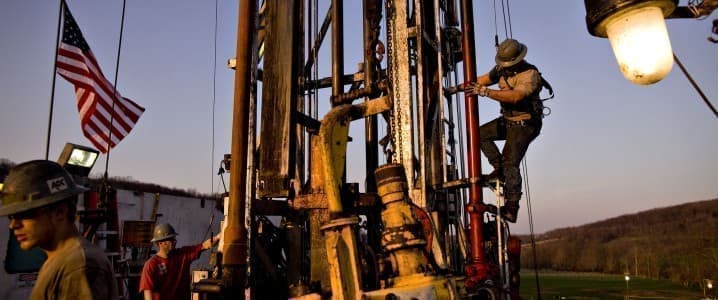In many ways, the roller-coaster-like trajectory of Vicki Hollub’s shale CEO career is emblematic of the boom-and-bust, spectacularly dramatic history of the West Texas Permian basin as a whole. When Hollub took over Occidental in 2016, the unbridled enthusiasm for the shale revolution that catapulted the United States to the top of the global oil production food chain was already fading. In 2019, she had made her relatively small company one of the biggest and most buzzed-about oil firms in the country. Now, she’s a cautionary tale. While the Permian Basin was still producing absolutely jaw-dropping amounts of oil and gas when Hollub stepped into her CEO role at Occidental (in April 2019, the shale play generated a whopping 4.1 million barrels a day, surpassing even Saudi Arabia’s monster Ghawar field to become the largest producing area in the world), investors were already becoming wary of the financial aspects of the fracking boom. Fracking is expensive and depends on high oil prices to be profitable--something that’s far from guaranteed in a sector as volatile as oil and gas.
What ensued was a major U.S. shale sector slump, accompanied by a flurry of mergers and acquisitions all around West Texas and New Mexico. For Occidental, this meant that they needed to either grow or get eaten by bigger fish. Hollub started eyeing acquisition options, setting her sights on a major purchase: Woodlands, Texas-based Anadarko Petroleum, beating out the much bigger and much deeper pockets of Chevron to do so. “On paper, merging with Anadarko made sense: with the addition of its assets in Colorado, New Mexico, and Texas, Occidental could become the largest operator in the Permian and the third-largest U.S. oil company,” recalls Texas Monthly.
Related: Egypt Looks To Resume LNG Exports As Prices Rise
Hollub was hailed for her assertive acquisition as a maverick. Occidental was celebrating the “deal of the century” and the company’s overnight transformation from second-tier to the same echelon as Exxon. But the celebratory headlines were short lived and premature. Whether the result of hubris on the part of Hollub and Occidental or simply bad luck and worse timing, the ill-fated $38 billion takeover was a disaster almost as soon as the deal was inked. The novel coronavirus had already begun to spread, Saudi Arabia and Russia were feuding, oil supply was becoming dangerously bloated, and oil demand was under major stress. For a business model that relies on oil prices around $50 or $60 a barrel, it was a recipe for disaster.
In the space of a year, she went from superhero to supervillain for her missteps and miscalculations. “She destroyed tens of billions of dollars of shareholder value,” Matrix’s David Katz told Texas Monthly. “She destroyed more value in oil and gas than any CEO out there.” But while Occidental’s story is particularly grim, Hollub is nothing if not a microcosm of a much larger death rattle emanating from the Permian Basin.
It turns out that, back in 2016, investors were right to get spooked by the high overhead and low margin of error for the Permian Basin.
While few if any could have anticipated a global disaster the magnitude of the COVID-19 pandemic, it’s been clear for a long time now that the shale revolution is in decline. Whether due to supply or demand, peak oil has been a very real spectre on the horizon. It’s here a little sooner than expected, but it was always expected. While shale CEOs are counting on the world relying on their product for another 30 years or so, a spectacular decline is inevitable. In the meantime, they might consider investing in the wind farms springing up all around them.
By Haley Zaremba for Oilprice.com
More Top Reads From Oilprice.com:
- Oil Majors Poised To Make Biggest Geothermal Investments In 30 Years
- Biden's Green Energy Boom Could Send These Electric Vehicle Stocks Soaring
- Goldman Sachs: Biden’s Federal Land Drilling Ban Is Bullish For Oil



















While the industry has emerged leaner and weaker from the COVID-19 pandemic, it will continue to need a life support machine paid for by American taxpayers to remain alive. But there will come a point not far off when even patriotic American investors will soon see the writing on the wall for shale oil.
Dr Mamdouh G Salameh
International Oil Economist
Visiting Professor of Energy Economics at ESCP Europe Business School, London